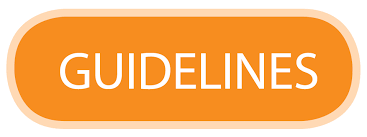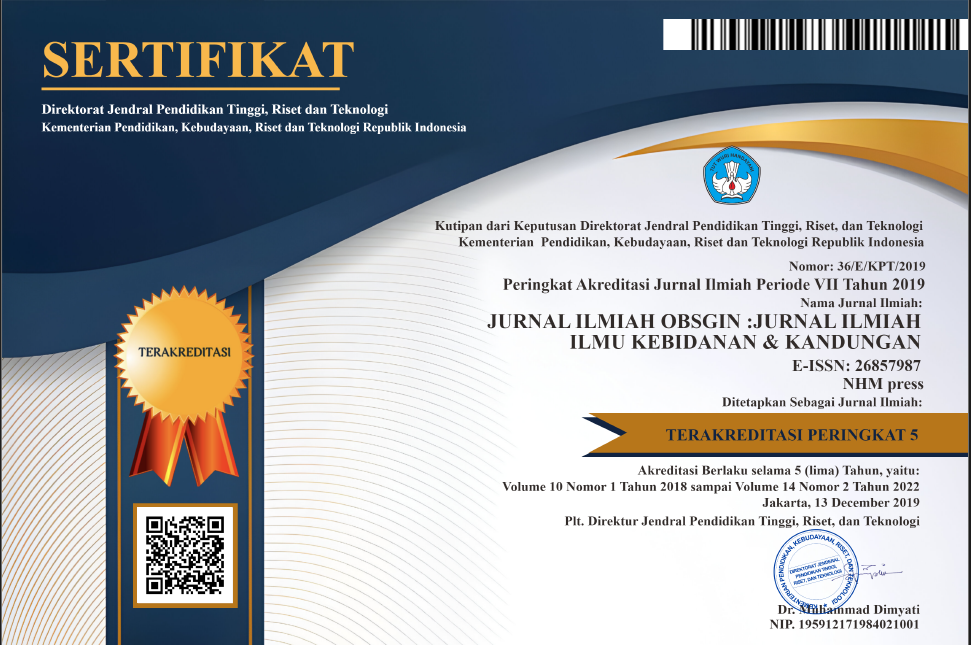HUBUNGAN TINGKAT PENDIDIKAN IBU DENGAN PEMILIHAN METODE KONTRASEPSI DIDESA JAMBEARUM KECAMATAN PASRUJAMBE KABUPATEN LUMAJANG
Abstract
The selected effective contraceptive method is the use of tools or methods to prevent pregnancy for an extended period, especially recommended for couples who do not wish to have more children and have high effectiveness (95%) when used properly and regularly. Selected effective contraceptive methods consist of several types; however, the community is not well-informed about these various contraceptive methods and lacks understanding in selecting the appropriate contraceptive method to use. This research aims to determine the relationship between the maternal education level and the choice of family planning contraceptive methods in Jambearum Village, Pasrujambe District, Lumajang Regency. This research is an analytical observational study using a cross-sectional design with a quantitative approach. A sample of 52 respondents was taken using purposive sampling technique. Data analysis was conducted using the chi-square test. The results of the research revealed that nearly half of the respondents had an elementary education level, with 21 respondents (40.4%). Furthermore, 49 respondents (94.2%) made appropriate choices in family planning. From the chi-square test analysis, the obtained value of α was 0.023, indicating that α < 0.05, thus it can be concluded that there is a relationship between the maternal education level and the choice of family planning contraceptive methods in Jambearum Village, Pasrujambe District, Lumajang Regency. It is essential to improve access to and education about various effective contraceptive methods among rural communities and increase access to education for women to support informed choices regarding their reproductive health.
References
BKKBN. 2017. Laporan Program KB Nasional tahun 2017
Handayani B, Rahmawati NI. Tingkat Pendidikan PUS Berhubungan Dengan Pemilihan Jenis Alat Kontrasepsi Tetapi Tidak Berhubungan Dengan Keikutsertaan KB di Desa Argomulyo, Sedayu, Bantul, Yogyakarta (Internet). Vol. 4, Jurnal Ners Dan Kebidanan Indonesia. Yogyakarta: Universitas Alma Ata Yogyakarta; 2016. 11 p. Available from: http://ejournal.almaata.ac.id/index.php/JNKI/article/view/221
Hidayat A, A. (2011). Metode Penelitian Keperawatan Dan Teknik Analisa Data. Jakarta: Salemba Medika
Luba, Saniasa., Rukinah. 2021. Faktor Yang Mempengaruhi Akseptor KBdalam Memilih Alat Kontrasepsi. JIKSH : Jurnal Ilmiah Kesehatan Sandi Husada Vul 10 (1). https://doi.org/10.35816/jiskh.v10i1.598
Maha, D. M. 2018. Determinan yang berpengaruh terhadap pemakaian alat kontrasepsi IUD di Puskesmas Kecamatan Kramat Jati Kota Administrasi Jakarta Timur tahun 2013. Jurnal Bidang Ilmu Kesehatan, 11(1), 745–754. http://ejournal.urindo.ac.id
Manuba. 2017. Ilmu Kebidanan, Penyakit Kandungan, dan KB, Jakarta: EGC
Maritalia, D. (2017). Asuhan Kebidanan pada Ibu Nifas. (S. Riyadi, Ed.). Yogyakarta: Gosyen Publishing.
Muhammmad.(2015). Hubungan Umur Dan Jumlah Anak TerhadapPenggunaan Metode Kontrasepsi Di Puskesmas Surabaya. Medical Technology and Public Health Journal, 4(1), 70–78. https://doi.org/10.33086/mtphj.v41.774
Mulyani, NS dan Mega Rinawati. 2016. Keluarga Berencana dan Alat Kontrasepsi. Yogyakarta: Nuha Medika
Notoatmodjo, S. 2014. Ilmu Perilaku Kesehatan. Jakarta: Rineka Cipta
Notoatmodjo, Soekidjo. 2010. Metodologi Penelitian Kesehatan. Jakarta: Rineka Cipta
Notoatmodjo, Soekidjo. 2018. Metodologi Penelitian Kesehatan. Jakarta: Rineka Cipta
Nugroho, Taufan.,dkk. 2014. Buku Ajar Asuhan Kebidanan 3 Nifas. Yogyakarta: Nuha Medika
Nursalam. (2017). Metodologi ilmu keperawatan, edisi 4, Jakarta: Salemba Medika.
Ritonga, E. S. 2018. Hubungan Pengetahuan Dan Tingkat Pendidikan Ibu Dengan Pengunaan Metode Kontrasepsi Efektif Terpilih Di Puskesmas Aek Godang Padang Lawas Utara Tahun 2018.
Rosidah, L. K. 2020. Pengaruh Tingkat Pendidikan Dan Usia Terhadap Penggunaan Metode Kontrasepsi Jangka Panjang Tahun 2018. Jurnal Kebidanan, 9(2), 108–114. https://akbid-dharmahusada-kediri.ejournal.id/JKDH/index
Rotie, N., Tombokan, S., Adam, S. 2016. Hubungan Pengetahuan Dan Tingkat Pendidikan Ibu Dengan Penggunaan Metode Kontrasepsi Efektif Terpilih. Jurnal Ilmiah Bidan, 3(1), 91646.
Sekaran, Uma dan Roger Bougie, (2017), Metode Penelitian: Pendekatan Pengembangan-Keahlian, Edisi 6, Buku 2, Salemba Empat, Jakarta Selatan 12610.
Sugiyono. (2014). Statistik Nonparametris untuk Penelitian. Bandung: Alfabeta.
Sugiyono. (20185). Statistik Nonparametris untuk Penelitian. Bandung: Alfabeta.
Suprihatin, P. N., & Indrayani, T. (2022). Efektivitas penggunaan daun sirsak terhadap keputihan pada wanita usia subur di desa belambangan kabupaten lampung selatan . journal for quality in women's health , 114-119
WHO. (2020). Buku Saku : Pelayanan Kesehatan Ibu Di Fasilitas Kesehatan Dasar dan Rujukan. (E. M. Moegni & D. Ocviyanti, Eds.) (I).











